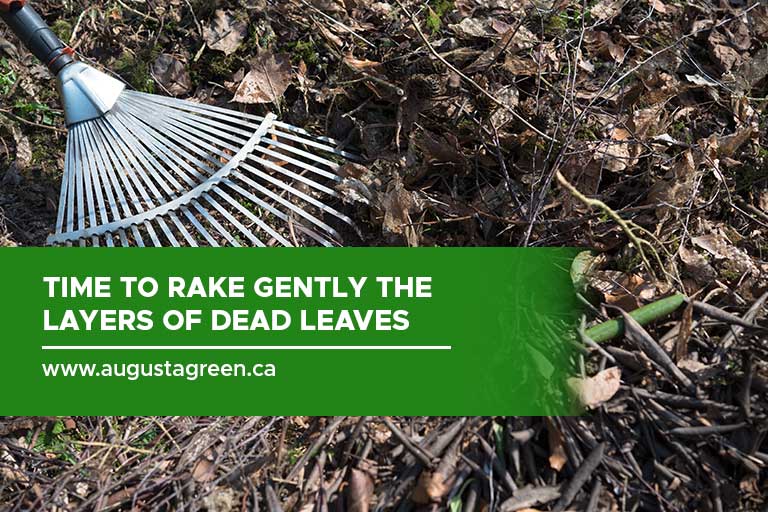After the harsh, cold winter months your garden has probably gone through much. However, there’s no need to worry because spring is here to thaw out the frost.
When you see the first buds appear, then it’s probably time for you to prep your garden for the breath of life that spring is about to bring. However, it’s important to remember that prepping your lawn for spring is different than other seasons.
Like winter, when you have to look out for dryness and blizzards, spring also carries with it a different set of challenges ranging from excess moisture, pest infestations, and overgrowth.
To prevent this from happening, there are a few steps you must take. If you want to breathe new life into your garden, then make sure to follow these tips to help it prepare for the drastic changes in weather and temperature:
- Test your soil
Moss thrives best during the winter months. This may seem promising, as it would signal the presence of moisture in your soil. However, their growth is a sign of increased acidity. If your soil has no weeds, then this may be due to the high acid levels present in your soil, which could kill off the budding saplings in your garden.
Aside from inspecting for the presence of moss, another way to check whether your soil is safe or not is to run a soil test. If it shows high acidity levels, you should add soil fixers such as grounded limestone to neutralize it.
For you to find out the appropriate amount of lime per area, you should consult with an expert horticulturist.
- Perform early spring raking carefully

Dead, fallen leaves on your lawn are the biggest enemies of budding saplings. Not only does it block out sunlight, which is crucial for photosynthesis, but it also locks in too much moisture, making it harder for plants to grow naturally.
Before spring officially begins, it’s advised to declutter your lawn by carefully raking out the accumulated thatch. Thatch refers to the withered turf grass that has layered up during winter. If the layer is more than a half inch, this can be detrimental to your lawn’s natural spring growth.
Make sure to remove them with a flexible leaf rake to gently brush them off without damaging the growing saplings underneath. Early raking can also prevent snow mould from accumulating, which could create uneven patches on your lawn.
- Aerate compacted soil
Compacted lawns are usually caused by too much foot traffic. During the winter, the heavy weight of the ice covering your lawn may place unnecessary pressure on your soil, blocking off any air, water, and moisture from coming in.
This type of environment is not conducive to saplings, since they need ample space within the soil to spread their roots. Pushing through that compacted soil will be too difficult for them.
To fix the compacted area, you should aerate it. You can aerate your soil by simply using a hoe or aerator shoes. Aerating allows you to gently stimulate the soil and break the pressure. However, be careful when doing this to prevent any damage to your sprinkler system installation.
- Apply seeds to visible patches and overseed the rest
Winter mould is among the main reasons why there are bare patches on your lawn. To remedy this problem, you can always apply nitrogen fertilizer in the affected areas and seed them. This will allow natural grass to sprout and germinate, thus covering up the patchy spots in your lawn.
To do this process more evenly, overseed the entire lawn as well. After the lawn has been completely covered by grass, you can then proceed to mow it to the height that you prefer.
- Fertilize the lawn
Fertilizing your lawn after a harsh and dry winter is crucial. When fertilizing your lawn, make sure to use natural sources such as mulch from lawn clippings. Fertilize in late autumn so that when spring comes, there’s still fertilizer left for the lawn to consume. However, choose your fertilizers carefully since some chemicals may be harmful. Ask your local green thumb shops for safer alternatives.
- Apply pre or post-emergent herbicide
Weeds tend to thrive during the warm and moist months of spring. To prevent weeds from invading your lawn, make sure to use pre or post-emergent herbicides. The type of herbicide will depend upon the type of weed, whether it is perennial or annual.
If your garden is vulnerable to crabgrass, then you may need both herbicides because this type of weed is hard to kill. Don’t conduct aeration until autumn when applying pre-emergent herbicides because this will lessen the effectiveness of the herbicide.
For perennials, use a post-emergent herbicide. However, the traditional method of addressing weeds is to just pull them by hand or use a tool to extract them, including their roots.
- Perform a maintenance check on your lawnmower

Long-term storage in the shed during the winter months can harm the engine of your lawnmower. To make sure that it’s still up and running for spring, conduct a lawnmower maintenance check and repair before using it.
Don’t forget to check all lawnmower components, from the blades and engine to the oil level, to guarantee it performs efficiently.
- Inspect your sprinkler system
Lawn sprinklers are the lifesavers of your garden or lawn during the start of spring. However, if your lawn sprinklers are experiencing some problems then it could lead to over or under-watering of your lawn.
To prevent this, make sure to inspect your sprinkler system first before using them. Better yet, schedule a maintenance check for your sprinklers from the irrigation experts.
- Check your outdoor lighting system
The harsh weather induced by the winter months may have damaged the electrical wiring and accessories of your outdoor lighting. Before turning your landscape lighting on for spring and to avoid any fires and accidents, make sure to run a full maintenance check on your bulbs, wires, and switches.
Due to a prolonged duration of dormancy, much of your garden equipment may have been damaged during the winter season. Your sprinkler system, lawnmowers, garden tools, and landscape lighting, may have issues during the first few days of spring. It would be wise to have the experts examine them.
This check-up also goes for your lawn. Make a cursory inspection of your lawn to look for possible problems. If you happen to notice issues with your lawn sprinkler system in Toronto, turn to the irrigation experts of Augusta Green Sprinklers. For a free estimate call us now at (416) 227-1666.


